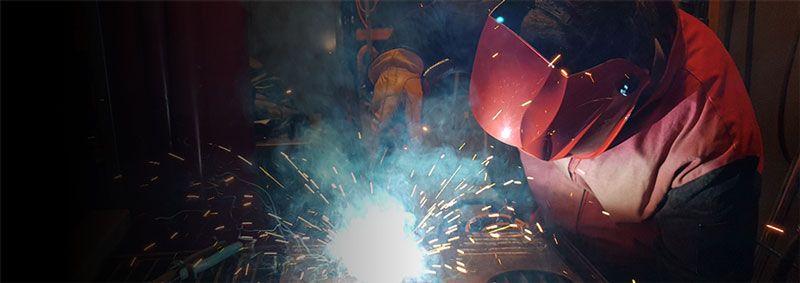Shop Now
- Welding Consumables
- Welding Torches & Torch Spares
- Welding Machines
- Plasma & Cutting Machines
- Welding Machine Spare Parts & Accessories
- Welding Fume Extraction Equipment
- Gas Welding Equipment
- Welding Abrasives
-
Welding Safety Equipment
- Welding Helmets
-
Welding Helmet Spares
- Speedglas Spares
- Betaweld Spares
- Cigweld Spare Parts & Accessories
- Flip Front Helmet Spares
- Jackson Spares & Accessories
- Lincoln Electric Spare Parts & Accessories
- Miller Spares & Accessories
- RPB Spares
- Servore Spares
- Unimig Spare Parts & Accessories
- Weldclass Spares & Accessories
- Miscellaneous Helmet Lens
- Welding Gloves
- Protective Workwear
- Welding Blankets
- Welding Screens & Curtains
- Ear Protection
- Eye Protection
- Face Protection
- Hand Protection
- Head Protection
- Respiratory Protection
- Sun Protection
- Hydration Products
- Fire Blankets
- Prestart Books
- Safety Signage
- Safety Tags
- Hazard Tape
- Welding Accessories
- Pipe Welding Equipment
-
Cutting & Drilling
- Bandsaws
- Bandsaw Blades
- Bandsaw Accessories
- Coldsaws
- Core Drills & Accessories
- Cutting & Milling Blades
- Diamond Blades
- Drill Bits
- Holesaws
- Magnetic Base Drills
- Metal Working Lubricants
- Pipe Bevelling
- Pipe Cutting Equipment
- Pipe Tee Pulling Kits
- Pipe Threading Machines
- Plasma Table Water Additives
- Punching Machines
- Welding Merchandise
- Gift Cards
- Clearances
-
Hire
- Hire Equipment
- Hire Heating Equipment
- Hire Degausing Equipment
- Hire Welding Automation
- Hire a Welding Positioner
- Hire a Turning Roller
- Hire a Diesel Welder
- Hire a Wirefeeder
- Hire a Multi-Process Welder
- Hire Accessories
- Hire a MIG Welder
- Hire a TIG Welder
- Hire a Stick Welder
- Hire a Plasma Cutter
- Hire a Weld Cleaner
- Hire a Stud Welder
Welding Consumables: A Guide to Performing Good Welds
Like any trade or craft, welding is not something you can perfect overnight. It can take anywhere between seven months to two years to become a certified welder, and much longer than that to fully master the dozens of different processes, materials, and tools professional welders use every day. In order to produce perfect welds on every job that will stand the test of time, you need to understand the science behind the processes, and that involves understanding the relationship between process and materials and choosing the right consumables such as welding rods, welding wires, and welding electrodes. In this blog, we look at some of the different types of welding consumables and how to choose the right one for your job.
Types of Welding Consumables
There are three basic types of welding consumables: solid wire, flux cored wire and rod electrode. First, let’s explore solid wire vs flux cored wire.
Flux Cored Vs. Solid Wire
MIG welding uses a continuous feed of solid wire and uses shielding gas supplied from a separate bottle to protect the weld pool from contaminants in the atmosphere. The shielding gas is typically argon or a 75-35% mix of argon and carbon dioxide, or sometimes argon and helium. It is a good choice when working on thinner materials such as sheet metal, and under these circumstances, solid wire will produce a good, clean weld.
For flux cored wires, we can further break them down into two separate categories; gas shielded and self-shielding. Gas shielded flux cored wire, like solid wire, requires a bottle of gas to shield the weld pool. Self-shielding wire creates its own shielding gas when the flux core is burned. This makes flux cored wire more portable as it requires no external gas tank.
Both gas shielded and self-shielding flux cored wires are suitable for use on heavier materials and outdoor jobs.
A further sub-category of flux cored wire is seamed vs seamless. Typically, flux cored wire is made by pouring the powdered flux core material into a U-shaped length of outer material, which is then curled and sealed lengthways. This leaves a fine seam along the length of the wire, which requires lubrication to feed smoothly through the welding mechanism. A certain amount of lubricant is inevitably extruded into the weld pool, resulting in a higher chance of impurities and a lower quality weld. With seamless flux cored wire, the core material is poured into a hollow tube, leaving a smooth wire without the need for lubrication.
Rod Electrodes
Rod electrodes are used in tungsten arc welding. Although we are discussing this in the context of consumables, in this process, the tungsten rod heats to melt the metal of the base material to create the weld and the rod itself is not consumed.
Alphaweld’s Wire Consumables
Alphaweld offers a high-quality, seamless flux cored wire from its Betaweld range. The SL-71TX wire features a copper outer layer and enhanced filling material. The low diffusible hydrogen content means this wire offers outstanding welding properties and can be welded in all positions using just one parameter setting.
Copper coated mild steel TIG rods offer a typical tensile strength of 490MPa. They are ideal for root pass welding of pipes and are suitable for use with tanks, boilers, and structural steel, among other uses.
We also stock a wide range of high-quality MIG welding wires from brands including Betaweld, Bohler, Corodur, Lincoln Electric, and more. These wires are made to suit a wide variety of applications and work with many different materials.
Contact Alphaweld Today
If you would like expert advice on choosing the right consumable for your application or further information on any of our products, contact us on (08) 9456 8000, email sales@alphaweld.com.au – or drop into our store today.


